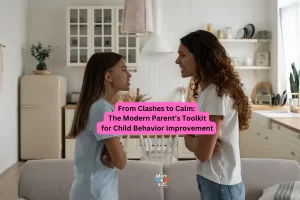Let me just start by saying that if you’re reading an article on 10 ways to raise a successful child, you’re probably already a great parent. Good parents are the ones who look for ways to help their kids be successful and who constantly learn new strategies. However, something may be standing in the say of your child being as successful as they can. Here are some things I’ve learned in my years as a teacher and a mom that can help any child be successful, regardless of their learning style or underlying ability.
Love the child you have
Table of Contents
I have two neurodiverse kids. My older daughter has anxiety and my younger daughter has ADHD. At first these were differences that made me feel less than, and I grieved not having a “normal” child who could be successful with traditional structures. Over time, though, I’ve come to learn that my girls’ differences are the super powers. With a few modifications, they can be extremely successful at anything they choose to do.
Learn about the different learning styles
There are four main learning styles that education researchers talk about. Visual learning is any learning that is mostly accomplished using the sense of sight, like by looking at pictures or watching a demonstration. Auditory learning has to do with learning things that you hear, whether through a lecture or a song or rhyme. Kinesthetic learning involves movement. Reading/writing-based learning is probably the way many of us learned in school, directly from a written text.
Embrace your child’s learning styles
Traditional learning focused a lot on auditory and reading based learning styles, but those are not the only ways to learn things. If you have a kid who doesn’t thrive with an auditory learning style, that’s totally okay! Start to notice what kinds of things your kids do learn and retain and think about how those learning styles could be used more throughout their learning.
Adapt the learning style to the skill or task
At one point, researchers thought that children and adults tended to specific learning styles, and that that modality of learning was the only way for that child to learn. There’s some newer research that suggests that’s not the case, and that we all need and use a variety of learning styles depending on what we’re trying to do. So if there’s something that you want to help your child learn, think about what learning style would be best suited to the task at hand. For example, an auditory learning style like a song or rap might work well for learning states and capitals, but it probably won’t work for learning knife skills in the kitchen. Something like that is going to be much easier to learn through visual and kinesthetic input. So, think about what you want your child to learn and what learning styles would best target those skills.
Focus on strengths first before weaknesses
It’s very easy to get caught up in the areas that our children need to improve. In fact, as parents and teachers, those tend to be the things that are at the top of our minds. However to raise a successful child, it is often much more helpful and successful of a strategy to start by offering enrichment and encouragement in areas where your child already has strengths. These will be things they are already interested in, so it will be easier to get buy in, and everyone – child or adult – needs to feel successful and accomplished. It’s good to give kids these opportunities to see that they are already good at things and aren’t just always struggling. So if your kids love Minecraft, even if you want them to focus more on reading novels, spending some time finding them resources to improve their coding skills to get better at Minecraft will actually help your case when it’s time to get them to read.
Adapt the environment to meet your child’s unique learning style needs
When I was a classroom teacher, I prided myself on all the stuff on my walls. I had learning targets posted, I displayed student work, I had posters with rules for writing and strategies for reading. I considered the classroom space an additional teacher and said that if the kids weren’t looking at me, at least they were still learning something wherever they happened to look.
And this was great. For some kids. But for other kids, having so much visual stimulation at all time was tantamount to torture. They wouldn’t hear a word I said as they were either darting their eyes around the room or shutting down. What I didn’t know then is that different kids have different sensory needs. Some kids thrive with a lot of visual input. Some need music to study. Some will work best sitting on an exercise ball instead of a chair, or wrapping an exercise band around the legs of their chair. There’s no one right answer for the best way to manage or set up your environment. The best way to adapt your environment is the way that meets your kids needs and learning styles.
Start with small, manageable changes for both of you
It is tempting when you institute any changes to your routines to go all in and change everything at once. This is a recipe for burnout for both you and for your kids. If your kids need more kinesthetic learning, instead of completely replacing all your furniture and throwing away your workbooks and instituting a 5k run every day, maybe start with adding one movement-based activity at a time.
Incorporate different learning style opportunities throughout your day
When my daughter was in first grade, she was having trouble with her fast addition facts. She has an extremely kinesthetic learning style and has trouble sitting still, so drilling with flash cards was never going to work. One day, we went outside and she wanted to play hopscotch. I had the brilliant idea of writing addition facts in each of the hopscotch boxes so that she could engage in kinesthetic learning while she did what she really wanted to do anyway.
Learning opportunities don’t need to be huge things. If you have an auditory learner, you can throw a few tracks of learning songs into your playlist for the ride to and from school. If you have a visual learner, you can hang a poster next to the bathroom sink so that your kids see it every time they’re in there. The important thing is that these learning opportunities become part of your everyday life and not a time you need to set aside to “do learning” or “work on” skills.
Make sure your own needs are being met
Because I already know that you are a good parent, I know that you would do anything you can to meet the needs of your child and his or her particular learning style. Remember though that you are also a person, and if your own sensory and learning needs aren’t being met you are very quickly going to burn out and not be able to help anyone. If your child needs a lot of noise to learn, but you thrive on quiet it is more than okay to leave the room sometimes or to wear noise cancelling headphones. In fact, consciously making those choices, and letting your kids see you make those choices, will help them to see ways to adapt to their own needs too.
Ask for help if you need it
Some kids can thrive with a just a few small changes in environment and learning style that their parents can make at home. But some kids, and I want to be very clear on this, CAN NOT. That is not their fault, nor is it your fault. If you start to feel like your children could use some additional testing or professional services please do not hesitate to seek those things out in your local community.
Summary – How to Raise a Successful Child
In conclusion, as parents, we all want the best for our children and hope to see them succeed in life. By understanding their unique learning styles, embracing their strengths, and making thoughtful adjustments to their learning environment, we can truly support their journey to success. Remember that every child is different, and it’s crucial to be patient and adaptable as you explore what works best for them. Always be open to seeking help if needed and never forget to take care of your own needs, as a happy and healthy parent is better equipped to nurture and guide their child. Ultimately, the most important gift we can give our children is the unwavering love and support they need to become confident, resilient, and successful individuals.














Add Comment